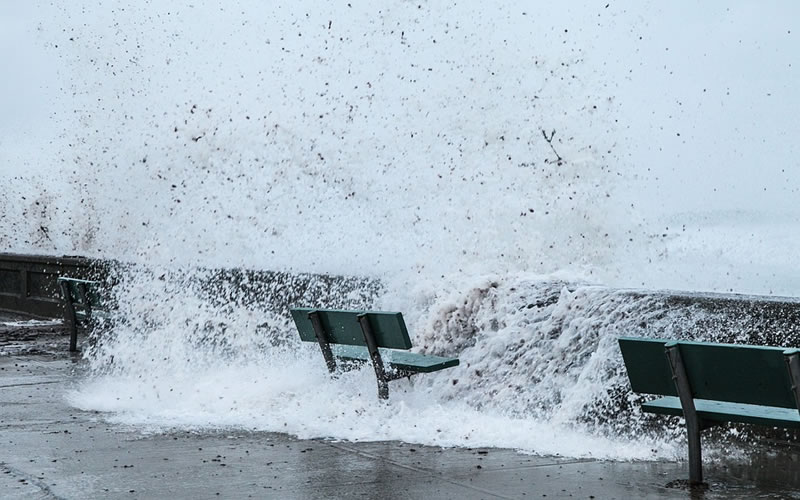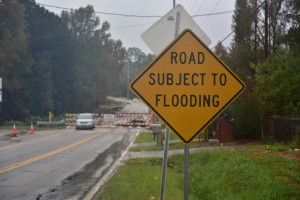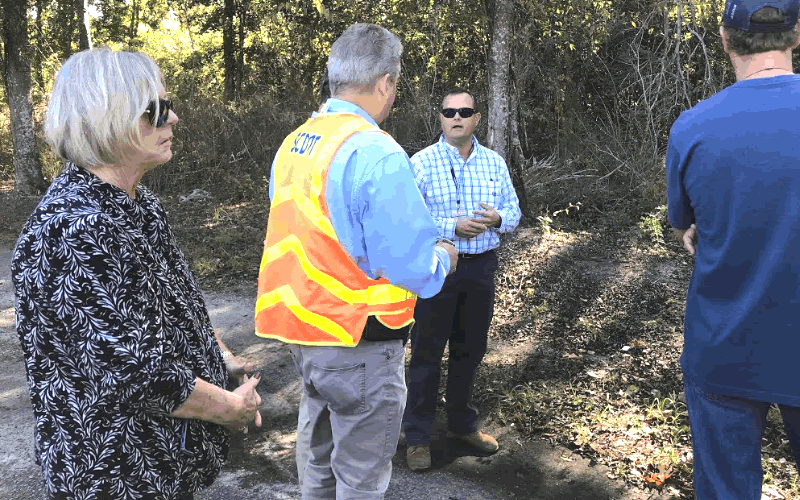
By Lindsay Street, Statehouse correspondent | Measures aimed at adapting to climate change are already being implemented in communities around the state, especially along the coast, as South Carolina is experiencing rising seas, stronger storms and increased precipitation.
Much of the work is being spearheaded by cities such as Charleston, Beaufort and Columbia, where mayors and local elected leaders are experiencing the first-hand effects of sea-level rise and climate change.
However, local issues are prompting even conservative lawmakers to act, despite the S.C. General Assembly having failed to pass any major bills to address climate change.

“(Climate change) exists and we need to get a handle on it,” Republican S.C. Sen. Sandy Senn of Charleston told Statehouse Report. “Are we going to stick our heads in the sand until it’s undeniable and we’ve lost opportunities to get ahead of the game?”
Senn heads a task force among her coastal delegation that seeks to help residents with flooding issues by working with local agencies.
‘Where the rubber hits the road’
A U.S. Conference of Mayors survey found 57 percent of responding municipalities nationwide are planning actions tied to climate change and 95 percent of respondents said they are experiencing the effects of climate change.
“Mayors and city councils are where the rubber hits the road,” Beaufort Mayor Billy Keyserling said. “Washington can make a policy but they don’t see what it’s like when a king tide hits the sea wall.”
Columbia Mayor Stephen Benjamin is president of the U.S. Conference of Mayors, which has made climate change a priority. He made headlines this fall when he was scheduled to talk about climate change in San Francisco but had to return home to deal with Hurricane Florence preparations.
“We in the Carolinas are forced to deal with the realities of climate change every single day,” Benjamin told USA Today in September.
Worsening conditions predicted

Last week, the fourth installment of the National Climate Assessment was released. The report focuses on impacts, risks and adaptation in the United States. In the chapter dedicated to the Southeast, the assessment found:
- The number of extreme rainfall events is increasing, and this will likely continue to increase in future conditions. This could impact transportation of people and goods, water quality, and further endanger people and property;
- Sea level rise has contributed to ongoing flooding in coastal areas and made flooding worse when storms arise. This trend is expected to continue with more “sunny day” flooding days predicted in the future; and,
- Cities across the Southeast are experiencing more and longer summer heat waves, and this trend is expected to continue. The Southeast is also seeing extended periods between freezes.
The assessment dedicates a chapter to community adaptation strategies:
“For instance, Miami-Dade County’s Capital Improvement Program is addressing hazards related to sea level rise, as is San Francisco’s 2015 Seawall Resiliency Project. It remains difficult, however, to tally the extent of adaptation implementation in the United States because there are no common reporting systems, and many actions that reduce climate risk are not labeled as climate adaptation.”
Reactive, proactive strategies
University of South Carolina geography professor Kristin Dow helped draft the Southeast chapter in the assessment. Last week, Dow spoke about the report.
“There’s a case to be made for investing in resilience, you often get a good return on those dollars, reducing hazard impacts,” Dow said in the presentation.
In the Lowcountry, the Coastal Conservation League is working with local governments on addressing resiliency. Communities and Transportation Program Director Jason Crowley said many of those conversations are just beginning.
Former city of Charleston planning projects manager and current Conservation Voters of South Carolina Field Director Carolee Williams said communities “adapting to sea level rise and flooding is a good entry point (for climate change adaptation). It’s the beginning of understanding that there may be ways we can be less impactful.”
The city of Charleston has made headlines for its work on stormwater and flooding issues. City leaders have visited the Netherlands to study response to rising seas in a low-lying region. A 2016-approved tax is expected to raise $2 billion by 2030 to help the city respond to flooding. The city also has published a sea-level rise strategy in recent years.
The city of Charleston did not respond to a request seeking comment for this story.
Beaufort has committed $16 million toward improving its stormwater system. Keyserling said the efforts began as a citizens group working to educate the public.
“Once it became time to start investing we had gotten to the point where people understood that the stormwater issue is tied to the rising sea level,” he said.
He called climate change “the single largest infrastructure question the country is going to face in quite a while.”
Williams called the city of Columbia the “poster child” for responding to climate change through mitigation efforts. The city launched its Climate Protection Action Campaign in 2006, which seeks to improve the environment through water conservation, energy conservation, air quality and recycling and waste reduction.
She also said Columbia is being proactive rather than reactive. The city of Columbia responded to interview requests but failed to make any person available for comment prior to deadline for this story.
“They’re looking at every opportunity for making a difference,” Williams said.
Other proactive steps have come in with land-use policies, according to Crowley at the Coastal Conservation League. He cited Folly Beach and Kiawah Island as municipalities that have developed resiliency plans aimed at taking advantage of green infrastructure to help weather rising seas. Crowley called greenspace like swamps and marshes were sponges that can help absorb excess water.
Experts also have listed the recent surge in single-use plastics and Styrofoam bans among coastal municipalities and the strong coastal opposition to offshore drilling as other proactive steps to mitigating further climate change.
Crowley said one of the most important steps municipalities can take is not allowing development in low-lying areas.
“Local governments need to stop allowing people to build in vulnerable areas that flood,” he said.
State-level work
The Coastal Conservation League is working with lawmakers to bring about new pieces of legislation that deal with development in low-lying areas, as highlighted in this September story by Statehouse Report.

While municipalities are spending and planning for climate change, Senn said the flooding task force is working to make sure existing dollars and infrastructure are working optimally.
The goal is to do neighborhood walk-throughs with all local government agencies involved to address flooding concerns. That way, no entity can blame another entity for a problem, Senn said.
While the work is aimed at working within existing budgets, Senn said she will work to secure disaster funding for the program from the state. She said she wants $154 million of Hurricane Michael money to go toward fixing flooding issues around Medical University of South Carolina in downtown Charleston.
The task force neighborhood walk-through began on James Island and is now countywide in Charleston. Senn said she hopes to take the model across the tri-county region.
Additionally, experts said this coming legislative session could help the state further mitigate climate change through focusing on transportation, removing the two-percent cap on solar energy, and include conservationist voices for water resources in the state’s water-use plan.
- Have a comment? Send to: feedback@statehousereport.com



Please stop clear cutting our trees. Flooding is in areas that were never a problem before all the development of all the MEGA subdivisions that have been allowed to cut the trees. These issues must be addressed. Why do we have zoning boards that are supposed to help curb the tree cutting, when they give carte blanche to the developers. I know money talks and trees don’t.